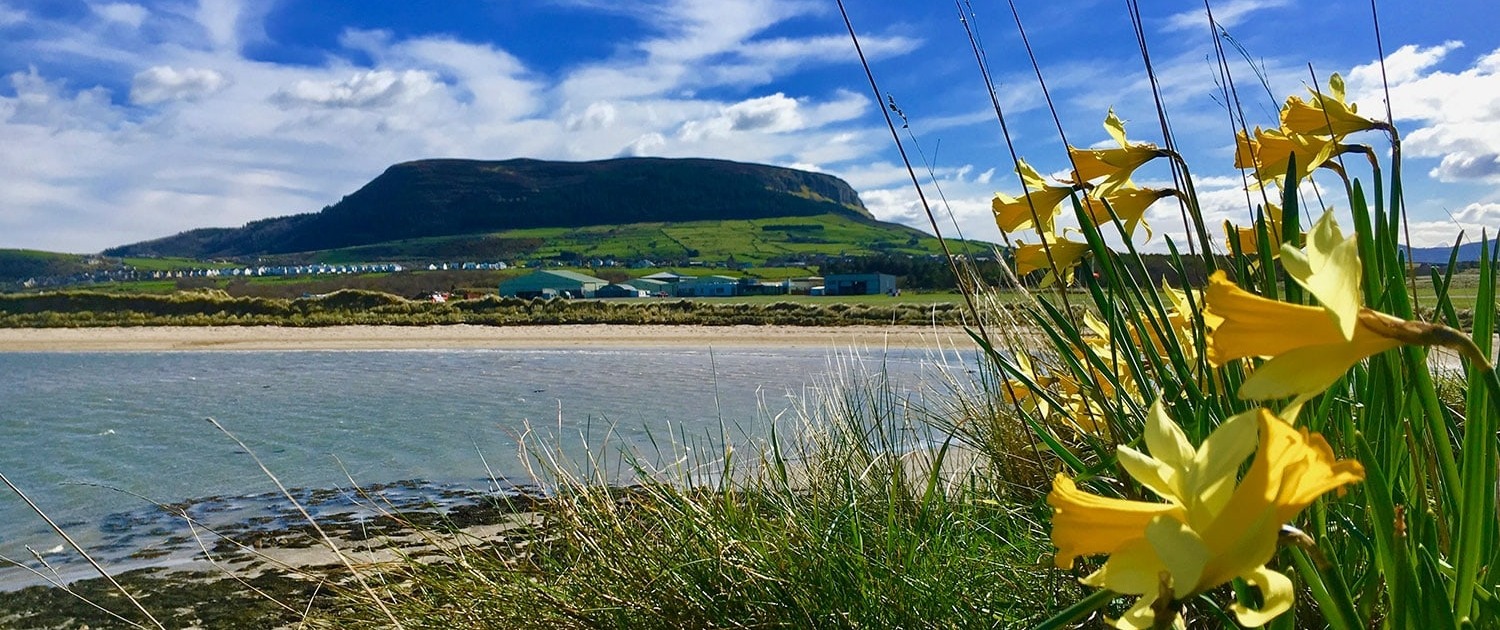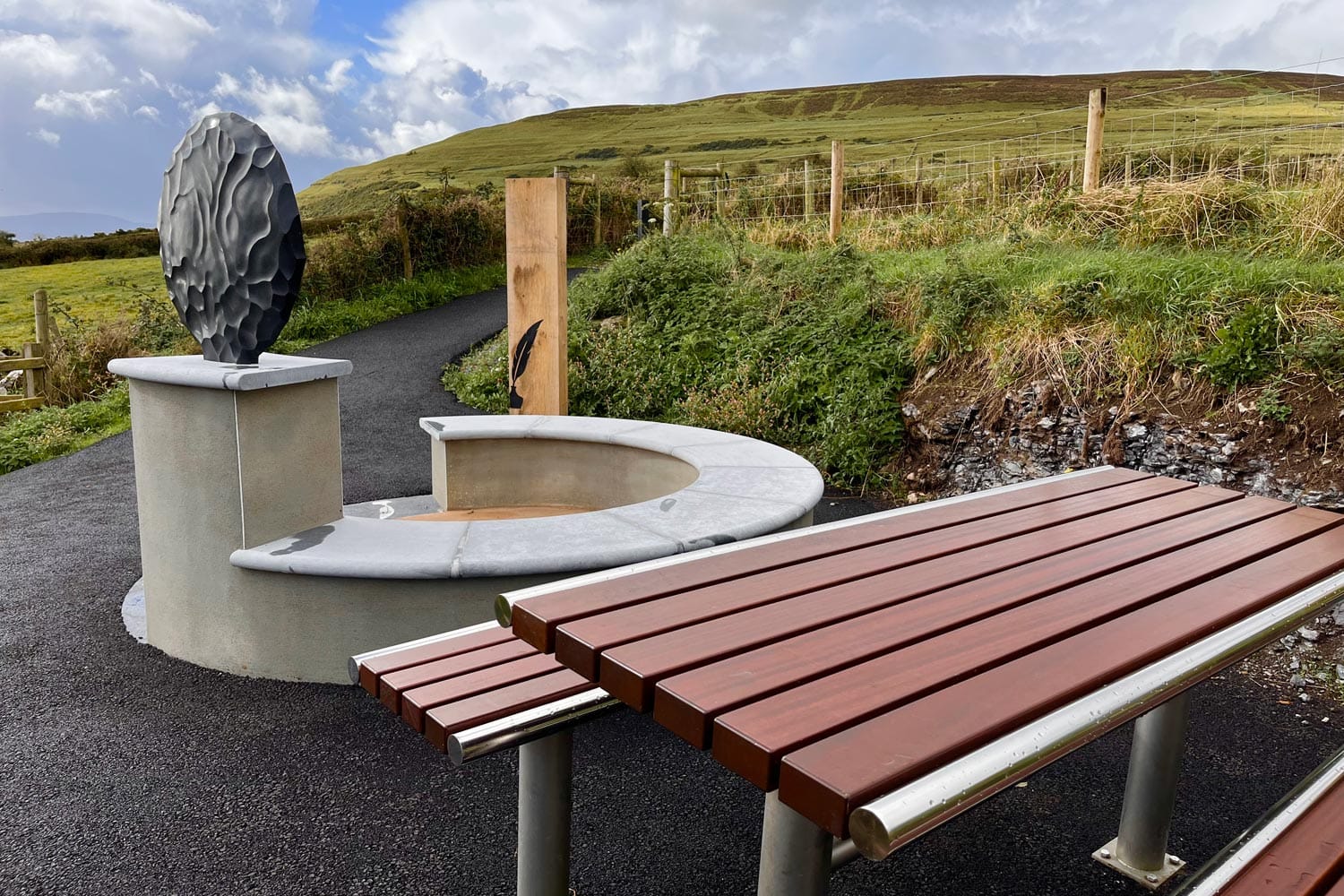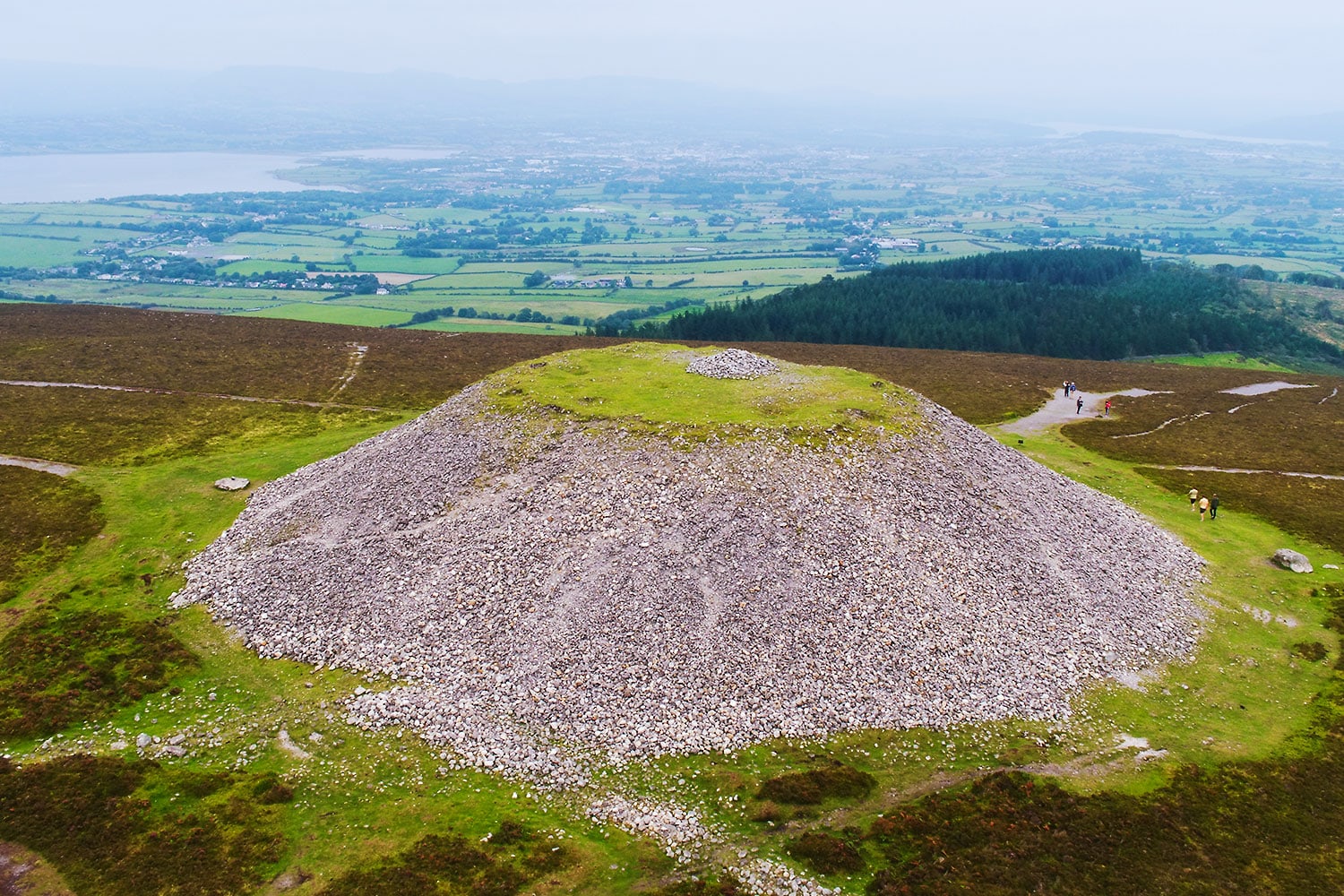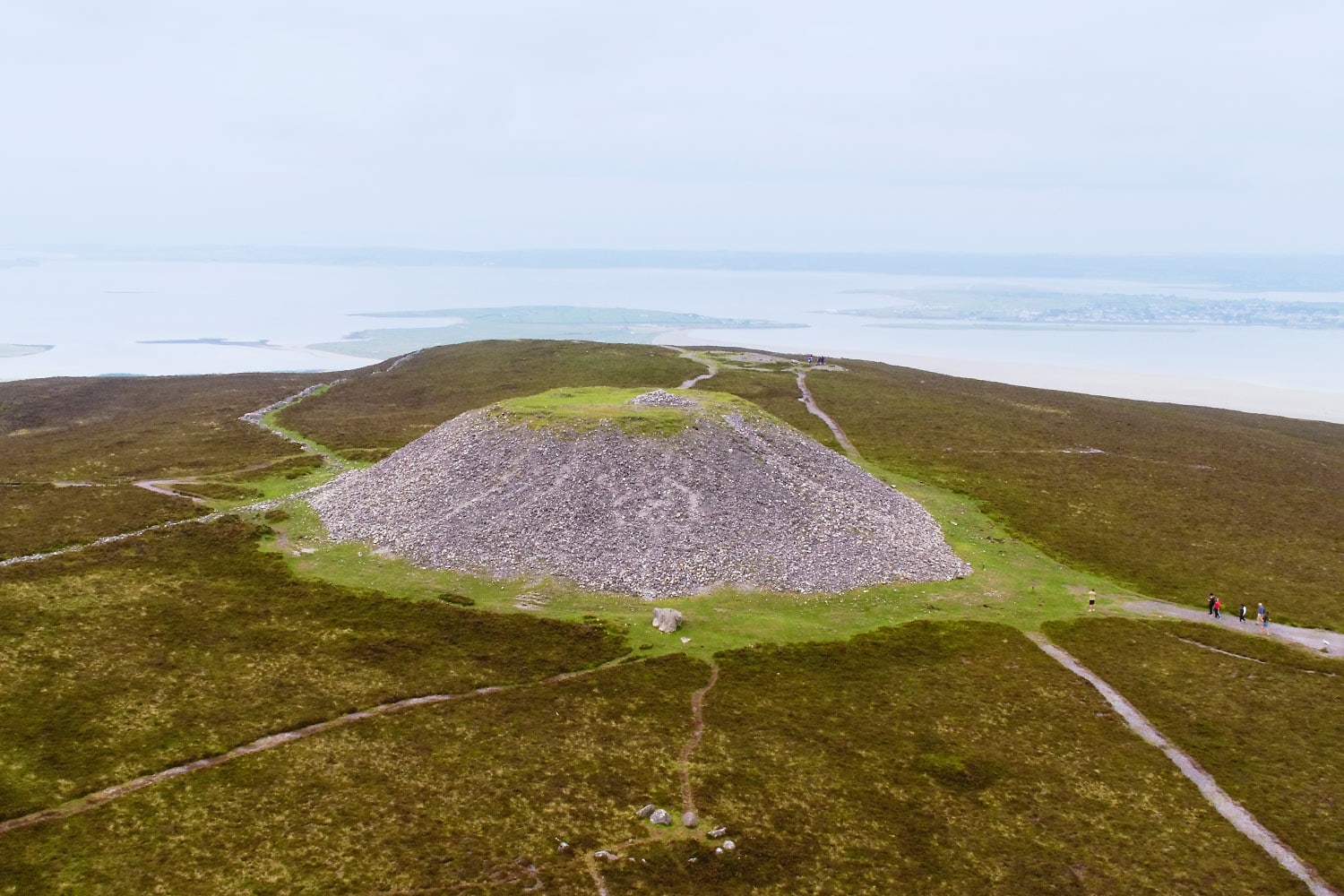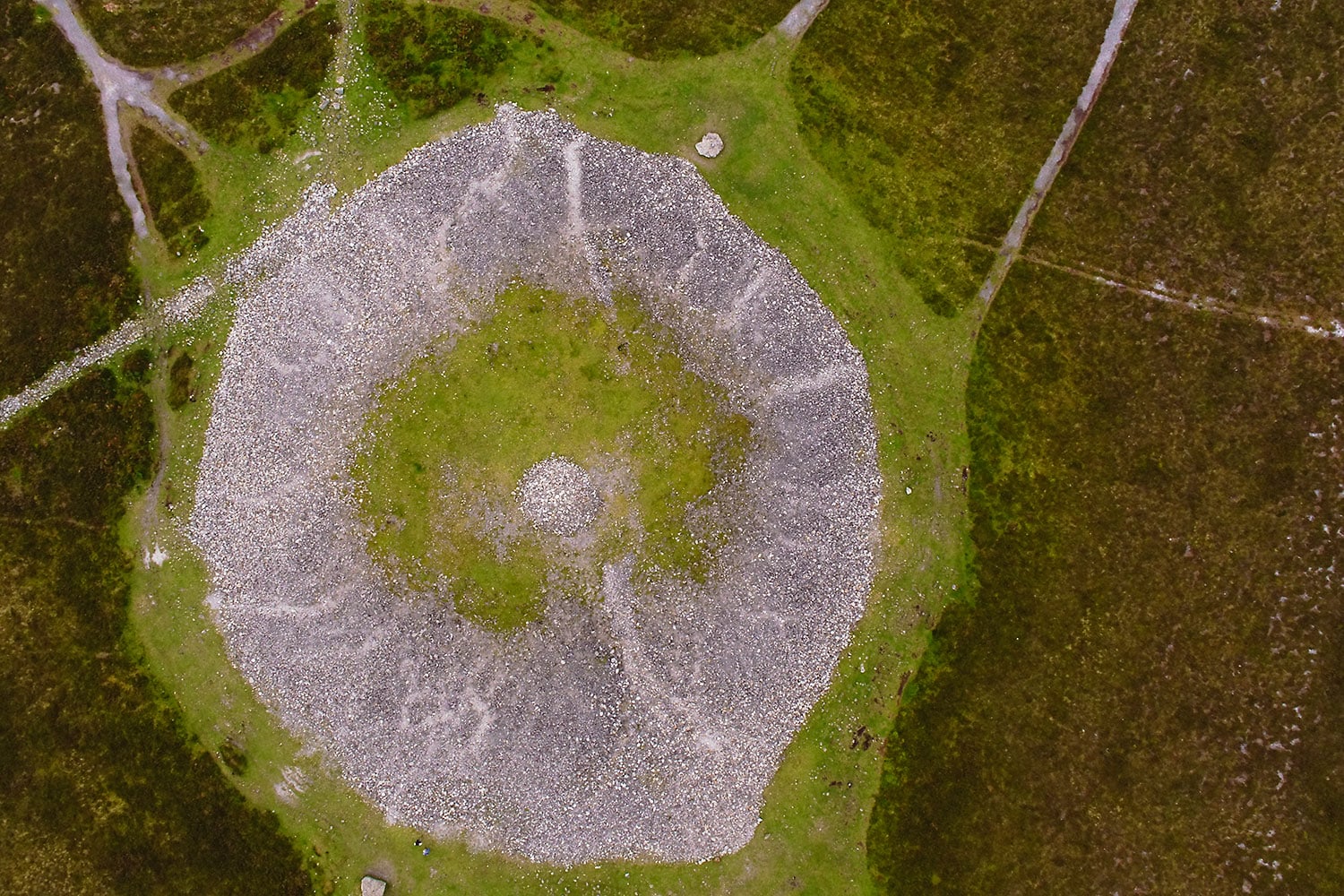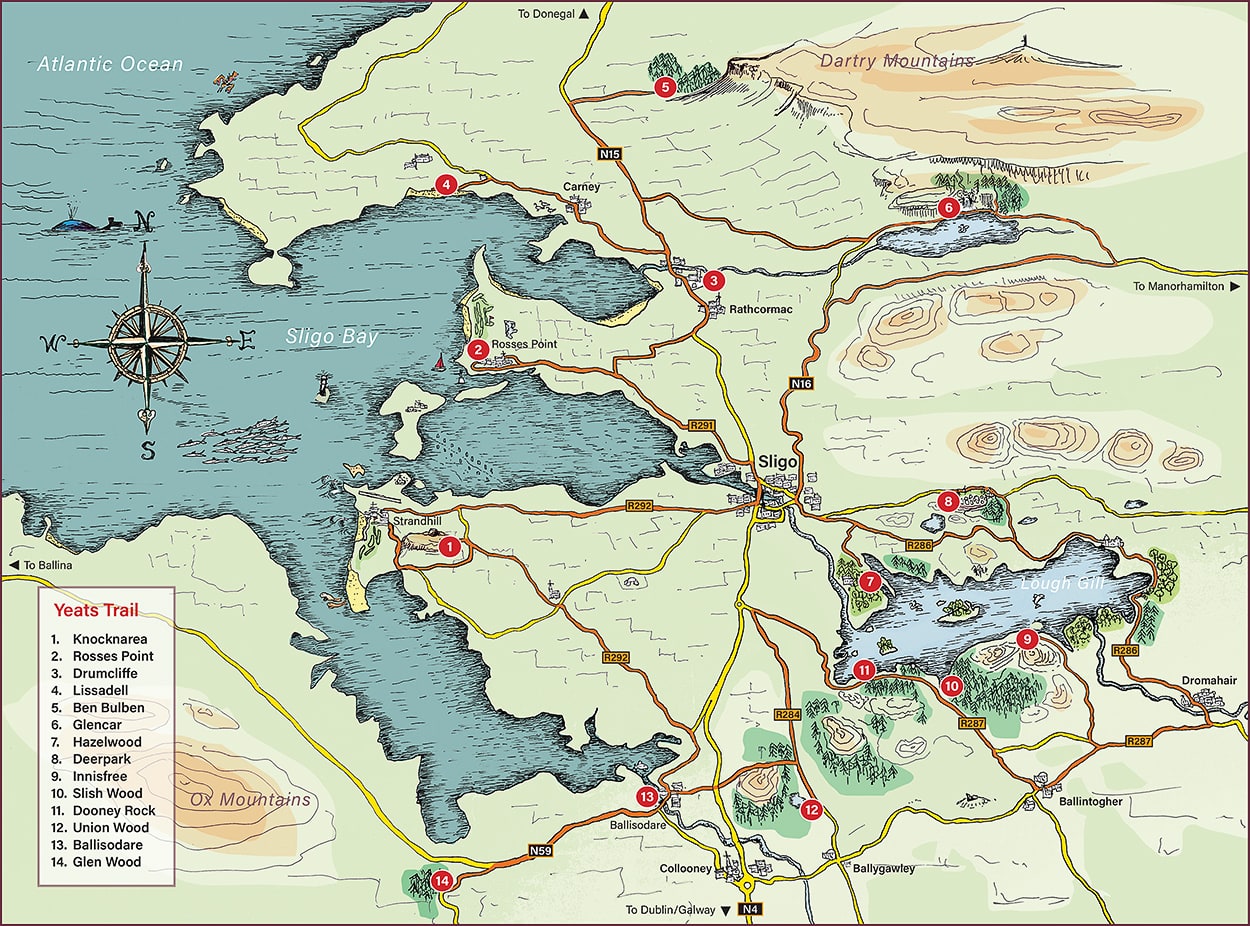‘The wind has bundled up the clouds high over Knocknarea,
And thrown thunder on the stones for all that Maeve can say’.
from Red Hanrahan’s Song About Ireland (1904).
Maeve was the fearsome Warrior Queen of Connacht who appears in Irish mythology primarily in the Táin Bó Cuailnge – the Cattle Raid of Cooley – in which she played a central role. Having reigned for over 60 years, tradition tells us that she was buried under a large stone cairn (or mound) which lies on the summit of Knocknarea.
We don’t know for certain whether Maeve or someone else lies beneath the cairn. It is thought that over a long period from the Stone Age to Christian times, various people of importance may have been laid to rest here. Only tiny bone fragments might still exist and as it’s unlikely that the cairn will ever be excavated, any suggestion as to who these people were will remain a mystery. But mythological stories passed down in the oral tradition were based on very real people, so let your imagination take over, as it did when Yeats pondered these same questions.
The cairn on Knocknarea could also have been the burial site of Eoghan Bel, King of Connacht, who died in 537AD. According to the Annals of the Four Masters, he was buried ‘in a standing position, with his red javelin in his hand, and his face turned towards Ulster as if fighting with his enemies’.
Yeats refers to Eoghan Bel in the poem The Black Tower, (dated Jan 21 1939, barely 8 days before his death), in the refrain line:
‘There in the tomb stand the dead upright,
But winds come up from the shore:
They shake when the winds roar
Old bones upon the mountain shake.’
from The Black Tower (1939).
The panoramic views from the summit of Knocknarea extend south and east to Ballysadare Bay, Lough Gill, The Ox Mountains, Knocknashee and the Carrowkeel Hills; north to Ben Bulben and Slieve League and west to County Mayo and the Atlantic. Yeats had a fascination with this terrain, both for its great natural beauty and for its mystical connections with some of the very early settlers in the region.
from The Wanderings of Oisin (1889)
Caoilte, and Conan, and Finn were there,
When we followed a deer with our baying hounds,
With Bran, Sceolan, and Lomair,
And passing the Firbolgs’ burial-mounds,
Came to the cairn-heaped grassy hill
Where passionate Maeve is stony-still;
And found on the dove-grey edge of the sea
A pearl-pale, high-born lady, who rode
On a horse with bridle of findrinny;
And like a sunset were her lips,
A stormy sunset on doomed ships;
A citron colour gloomed in her hair,
But down to her feet white vesture flowed,
And with the glimmering crimson glowed
Of many a figured embroidery;
And it was bound with a pearl-pale shell
That wavered like the summer streams,
As her soft bosom rose and fell.
Directions
Parking: Car park
Walking Trail: https://sligowalks.ie/walks/qmt/
Longitude: 54.25326 Latitude: -8.55774
View location on Google Map

